There are about 900 moais distributed in different places of Rapa Nui, in different states of preservation. Some are restored, and others are lying down, and even broken into several pieces. Some have their own name, or the name is assigned to the Ahu in which they are grouped.
Ahu Nau Nau
Located on the beach of Anakena in the northeast of the island, it is excellently preserved after several restoration works were carried out.
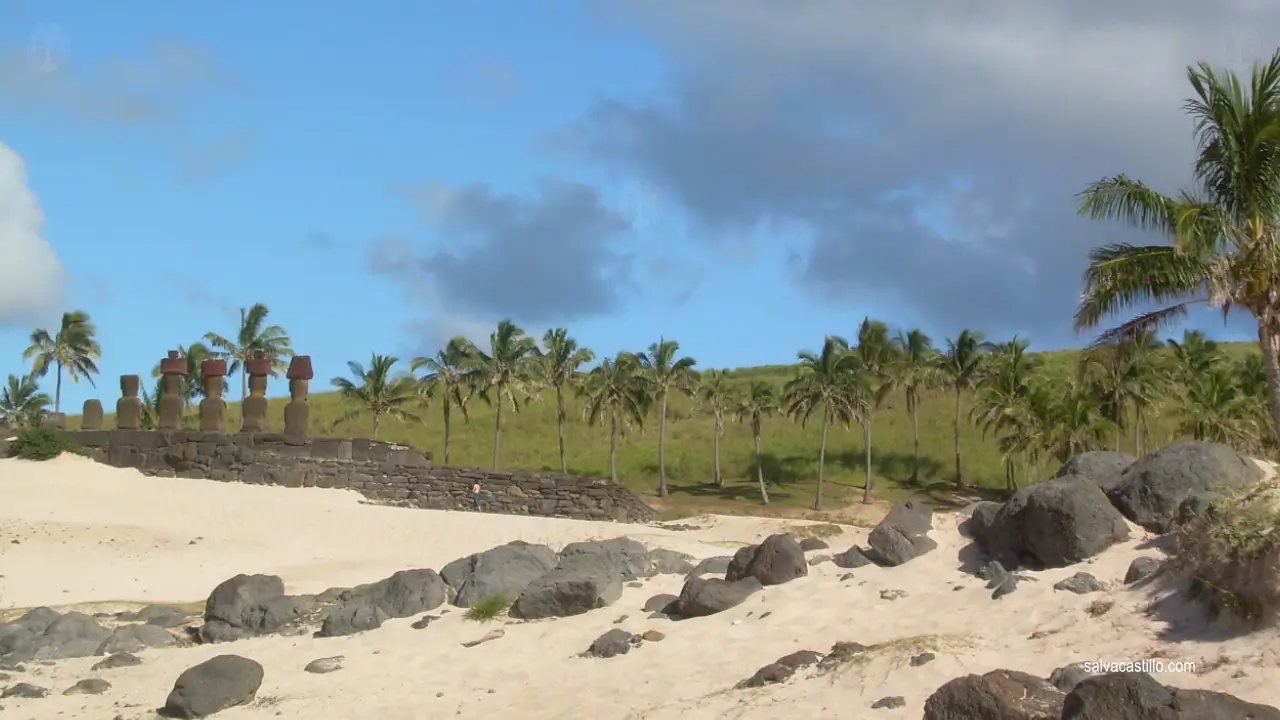
It is composed of seven moais standing on a long platform, where 4 of them have placed the pukao or hat.

Quarry in the volcano Rano Raraku
The slope of the Rano Raraku volcano is the place where the largest number of moais are found. In the background, carved into the rock, you can see the moai Te Tokanga, the largest of all the moai.

Most of them are half-buried but there are others that are lying down and there are also broken ones.



The quarry is annexed to a crater over which a small lake has formed:

Although it is not the highest point of the island, from the quarry you have a great perspective of the island:

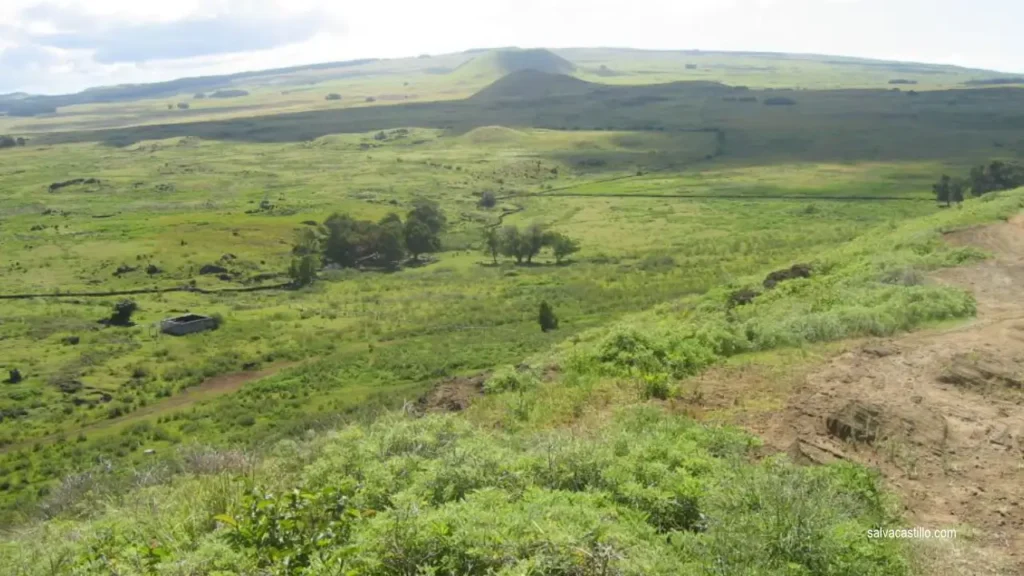
Moai Hinariru
The Hinariru moai is special because it is the only one with a twisted neck.

Moai Ko Kona He Roa
This moai presents an engraving representing a European three-masted sailing ship, made after the moai was sculpted and placed in its present location.
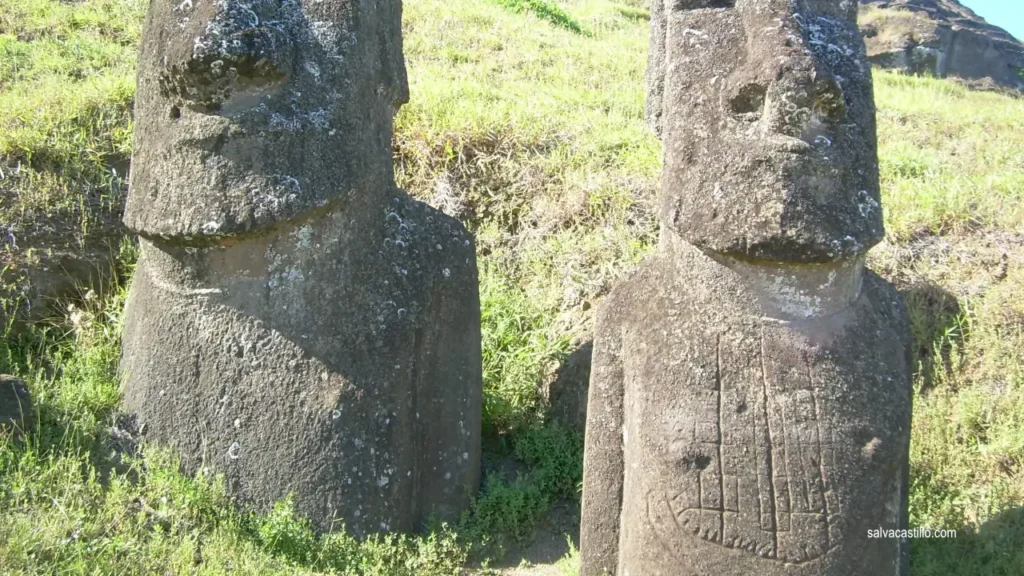
There is a theory that the Rapa Nui considered the first European explorers as divine envoys.
Ahu Tongariki
Following a winding path and a narrow passage in the rock, you reach a part of the summit of the Rano Raraku volcano with one of the most spectacular views I have ever enjoyed: the Ahu Tongariki with the Pacific Ocean in the background.

Those Norwegian guys I made friends with and I were absolutely amazed. Under our feet we had an overwhelming vertical wall and, in front of us, one of the wonders of the world, looking at us.
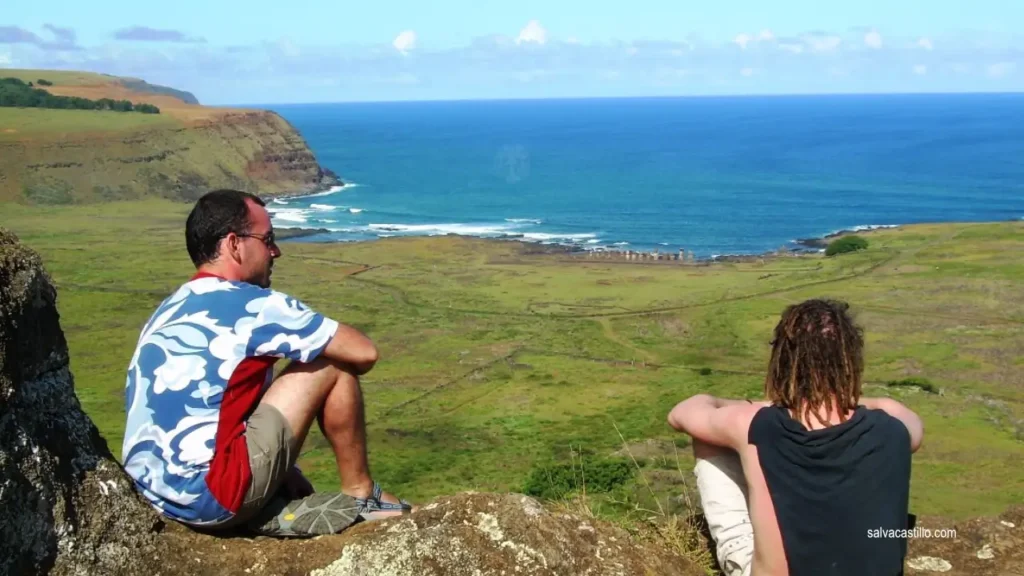
On the way down to the Ahu, we passed by several moais that were lying down and others that were directly broken.
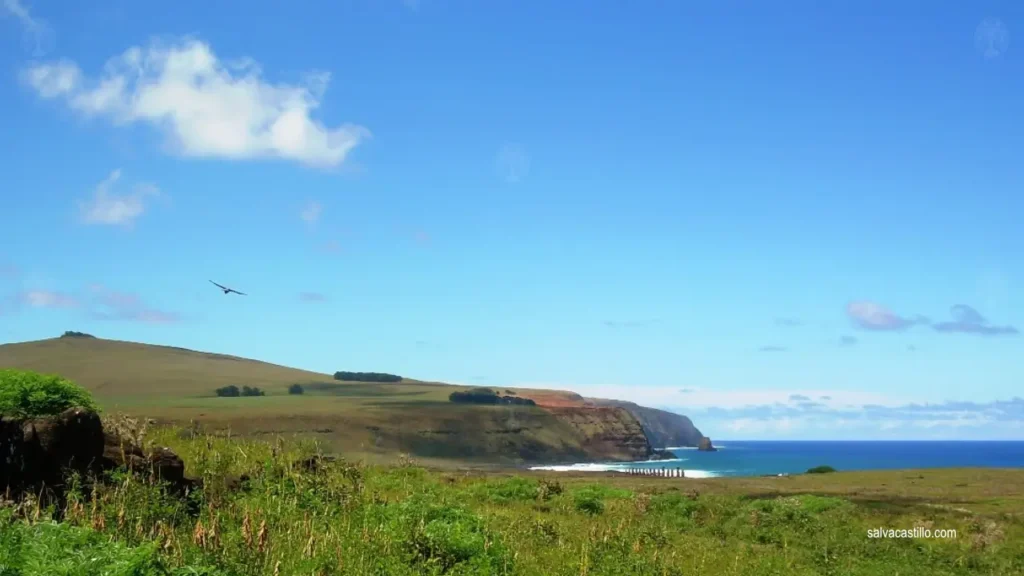

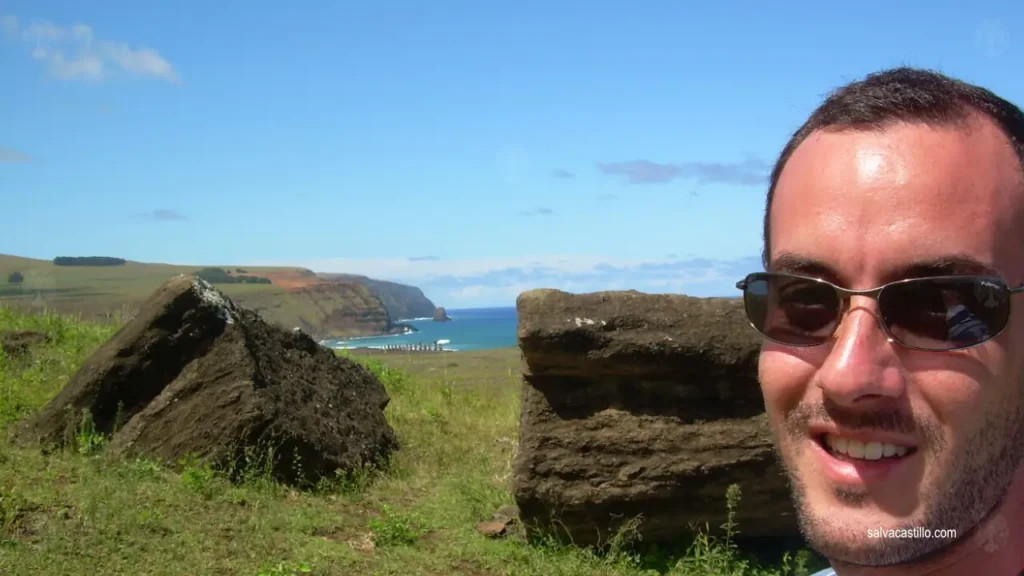

And, finally, we arrive at the majestic Ahu Tongariki, where before entering the enclosure we are greeted by the moai A Vere or traveling moai. It is so called because it was sent to the Japanese city of Osaka in 1982 to participate in an exhibition. After returning, in 1986 it was the moai chosen by the engineer Pavel Pavel to test his theory on how the Rapa Nui moved the moais from the quarry to their place of destination. 20 people and some ropes proved the theory to be true. It is one of the few moai facing the sea.

The Ahu Tongariki is made up of 15 moais, different from each other, arranged on an Ahu of more than 100 meters.
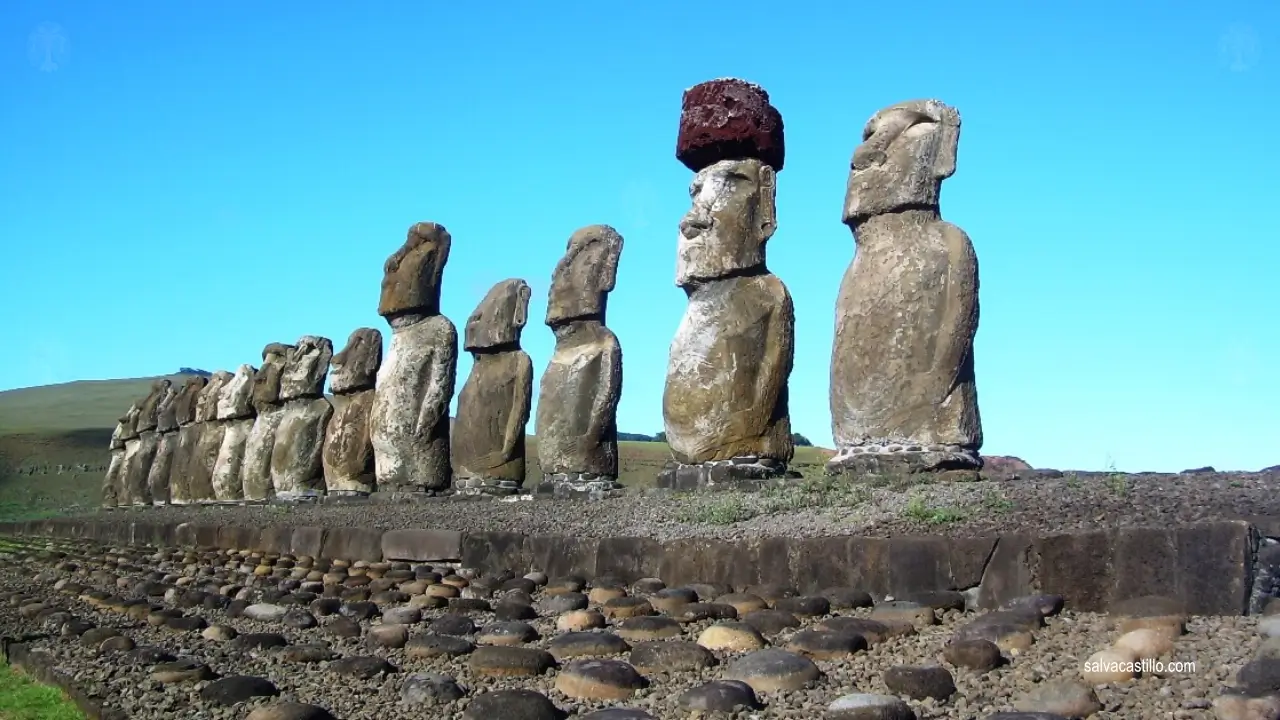
The group was terribly impacted by the tsunami of 1960, originated by an earthquake in Chile, which crossed the Pacific Ocean to the coasts of Hawaii, New Zealand and different islands of Polynesia. In Rapa Nui it entered from the southeast and the force of the tsunami dragged the moai several hundred meters into the island, the water reaching the slope of the Rano Raraku volcano, and causing damage to moais, pukaos, and other funerary elements. A collaboration between Japan and Chile allowed the Ahu Tongariki to be restored to its original state.
Tahai
In the vicinity of Hanga Roa, in the Tahai area, there are three very unique Ahus. This monumental complex is one of the most recommended spots to see the sunset in Rapa Nui, as the moai cover the sun, leaving only the Pacific Ocean behind.

Ahu Vai Uri
There are 5 moais, in different state of preservation, although a sixth moai can be seen in the vicinity, lying and split. It is believed that this moai was also part of the same Ahu but was damaged by rival clans.

Ahu Tahai
It is the oldest moai of the whole island. Its name means “where the sun hides“.

Ahu Ko Te Riku
It is the only “complete” moai in the whole island, in which you can appreciate how the coral eyes and the pukao give a more imposing (and “present”) character to the moai.


Ahu Akivi
It is an impressing Ahu that has several peculiarities:
- It is located in the interior of the island, rather than a more usual location on the coast.
- It is perfectly aligned astronomically, so that the moai face the sunset at the spring equinox, and turn their backs to the sunrise at the autumn equinox. This astronomical arrangement is unique on the island.
- Although they are on an Ahu, the moai are arranged facing the sea instead of inland as is normal.

Legend has it that these statues do not represent ancestors of the inhabitants, but explorers who were sent by the Ariki Hotu Matu’a to explore the ocean and find Rapa Nui.

Seven of them stayed on the island awaiting the arrival of the Ariki, and they are the ones represented in the Ahu Akivi.
